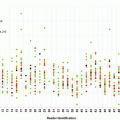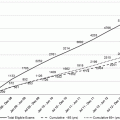© Springer Science+Business Media New York 2015
Aasma Shaukat and John I. Allen (eds.)Colorectal Cancer Screening10.1007/978-1-4939-2333-5_1111. Managing Quality in Ancillary Services
(1)
Atlanta Gastroenterology Associates, LLC, 550 Peachtree St. NE, 30308 Atlanta, GA, USA
Keywords
ColonoscopyAncillary servicesAmbulatory surgical centerAnesthesiaPathologyInfusionValueQualityAccessIntroduction
The traditional role of the gastroenterologist has changed over the years, as it has for many medical and surgical specialties. In taking care of patients, not only the professional part of care is rendered but also the doctor has assumed the ability to offer many of the components that are ancillary but critical to the totality of service provided. When the physician assumes this role, he/she also carries the responsibility to make certain that the quality provided meets or exceeds all applicable or expected standards. Quality alone is not enough in today’s market place, and, if the doctor is to undertake the role of providing ancillary services , we must also look at the value proposition created.
A crucial principal in a free market is that the consumption of goods or services will only occur when the value is created. In health care , the value is determined by the ability to access quality care as a function of its cost. At some threshold, poor quality or extraordinary cost leads to diminishing value , whereby the benefits of care to the patient no longer exist. Over the years, the field of gastroenterology adapted to create significant value for both patients and their payers. In this chapter, we will discuss specific ancillary services provided by many gastroenterologists and how to assure the quality and value.
Colorectal Cancer Screening
Study after study reemphasizes the benefits of screening colonoscopy for reduction of morbidity and mortality related to colorectal cancer . The United States Preventive Services Task Force and numerous society guidelines recommend screening for appropriate patients. Despite the various options for screening, colonoscopy remains the gold standard as it has the greatest diagnostic ability through enhanced detection and tissue sampling of simple and complex dysplastic growths. Further, colonoscopy has the potential for curative therapeutics by the means of polypectomy , thus making colonoscopy the premier modality for screening .
Ambulatory Surgical Centers
Historically, hospitals were the main sites for colonoscopies, as it was perceived that an invasive procedure requiring patient sedation could only safely be performed in a hospital setting . But, over the years, growth in ambulatory surgical centers (ASCs) specializing in a variety of minimally invasive surgeries and endoscopic procedures has exploded. The utilization of ASCs for colonoscopy benefits all parties—payers, patients, and providers. Often owned by groups of physicians, services provided by an ASC are provided to patients and their payers at a marked reduction of the costs compared to the hospital setting; physician ownership is appealing as it allows the doctor to maintain operational control and ownership of a profitable asset, two clear incentives to run an efficient process.
However, to ensure value, besides just lowering cost, the safety and quality of the colonoscopy performed must not be compromised. If patient safety was compromised, no value could be gained. In 2011, Dr. Azrak’s article illustrated safety at ASCs; a 15-year review of a random sample of 174,000 + patients showed no statistical difference in associated complications (morbidity) or mortality of Medicare patients receiving colonoscopy in a hospital versus an ASC [1]. To further solidify the safety in ASCs, Centers for Medicare and Medicaid Services (CMS) require certification and/or accreditation by state regulatory commissions or registered societies. These governing bodies ensure a specific level of conditions for coverage—essentially minimal standards necessary to ensure safety. However, state and society guidelines are typically even more stringent and demanding. Centers only need approval from either the state or an accrediting body, but most ASCs now are obtaining both. The three accrediting bodies registered through CMS include the American Association for Accreditation of Ambulatory Surgical Facilities, the Accreditation Association for Ambulatory Health Care, and the Joint Commission on Accreditation of Healthcare Organizations. Surveys of the facility do not just occur at the opening of the center, but periodically to ensure standards are consistently met, with even unscheduled “surprise drop-ins .”
With demonstration of safety at the facility and necessary oversight in place, and the case for cost squarely in the ASC corner, the only remaining question remains the quality of the procedure. The standards of colonoscopy remain the same, regardless if performed in a hospital or in an ASC. The gastrointestinal (GI) community at large has quickly identified specific quality indicators . Furthermore, many centers track and grade individual physicians by these standards, specifically adenoma detection rate (ADR), cecal intubation rates with photography documentation of landmarks, withdrawal times, and complication rates. Centers concentrating on care are also tracking appropriateness of repeat intervals based on guidelines, and documentation of prep quality.
However, what separates a single purpose ASC from a hospital is its focus. While the expertise is definitely still present, a provider whose sole concentration is a small cluster of procedures clearly outweighs having to be a part of a diverse offering. The ASC procedural technicians and nurses also benefit from this same practice; hospitals often find themselves pulling staff to cover other areas . Experienced GI techs working solely in one center with just a handful of physicians leads to understanding the style of practice and habits. This familiarity improves the working relationship between team members in the endoscopy suite leading to improved quality, patient care, and experiences .
Finally, with physician ownership in an ASC, there is a financial incentive to keep costs low. Lower costs can be obtained through volume, efficiency, appropriate staffing, and improved buying power/negotiation as physicians cooperate on standardization of equipment. There is also a freeing up from burdensome and expensive hospital regulation and requirements that may make sense for inpatients with greater acuity of illness but often add to cost without benefit for the ASC setting. Frankly, many argue that physician ownership creates conflict of interest, in particular, the possibility of inappropriate over-usage. However, this same interest also leads to a better patient experience as the physician’s reputation and business relies on providing a top-quality patient encounter. Also, the differential between ASC cost and more expensive hospital settings is not just fractional but can vary up to 4–8 × for the same procedure, a fact that seems to be poorly understood and is hard to justify in any system where value must be offered .
Anesthesia Services in Colonoscopy
Clearly, screening colonoscopy saves lives. Thus, all barriers which prevent access to the test must be removed . Besides patient displeasure with the colonoscopy preparation, a major limitation to access remains patient’s fear of discomfort during the procedure. Though no causative data exist, there is no surprise that the utilization rate of colonoscopies is increased as the access to anesthesia services for colonoscopy has improved.
Moderate sedation with narcotics and benzodiazepines remains the cheapest method for providing comfort . However, significant drawbacks to physician directed moderate sedation exist. First, delivery of moderate sedation requires a registered nurse and an ordering physician, typically the endoscopist [2]. Performing a high-quality examination for colonic abnormalities (polyps, etc.) should be the endoscopist’s primary objective, not the constant monitoring of a patient’s cardiopulmonary status and their comfort. Furthermore, recovery time from moderate sedation by the patient is much longer than that of propofol sedation, the most common anesthetic used for colonoscopy through monitored anesthesia care. Delayed recovery times decrease efficiency in an endoscopy suite and thus access is affected. Additionally, though moderate sedation is effective, patients across the board describe their experience with propofol much more pleasantly than that of moderate sedation—in particular, the procedure and recovery process—as nausea and grogginess is much less.
Stay updated, free articles. Join our Telegram channel

Full access? Get Clinical Tree





